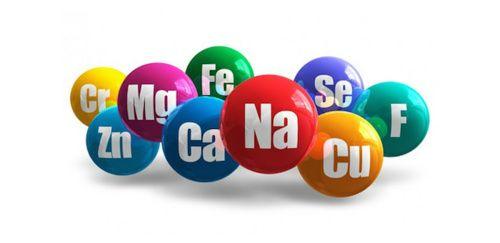Artificial, pulverized, concentrated or diluted, combined with plant extracts or "matured" in thermal waters, minerals are a precious resource for man, his health and well-being. We present a list of the main minerals and their respective properties.
> Physical properties
> The classification of minerals

What are minerals
The term minerals comes from the medieval Latin mineral, derived in turn from the old French minière, or “mine”. Minerals are defined as natural inorganic bodies, generally solid and rocky, which were formed on the earth's crust through geological, physical and chemical processes.
La stechiometria it is the science that studies the chemical compounds of bodies and their reactions, even of crystalline solids such as minerals.
While the mineralogy deals more specifically with the study of minerals.
Often we tend to attribute the mineral appellation also to elements in the liquid or gaseous state, extractable from the subsoil. A mineral can consist of only one chemical element, such asgold (Au), or by one or more elements bonded together in a simple chemical compound, such as quartz (SiO2), or by molecules with a complex formula. The composition of the minerals therefore varies from simple chemical elements to salts up to very complex silicates.
The physical properties of minerals
<br>• The hardness. Hardness is measured by the ability of a mineral to scratch or be scratched by other minerals and is measured according to the Mohs scale.
<br>• The shine. This parameter indicates the interaction of the mineral surface with light and can be opaque or glassy, i.e. metallic luster or non-metallic luster.
<br>• The color indicates the appearance of the mineral in reflected light. The color of a mineral can depend on both its chemical composition and the presence of impurities. The same mineralogical species can present different colors.
• The weight specific to minerals.
<br>• The birifrangenza, that is the optical property resulting from placing the mineral between the light source and the observer and which allows you to observe objects with split edges.
<br>• The flaking, which describes how some minerals break down.
<br>• The fracture, which describes how a mineral breaks down.
<br>• The density, that is the mass of the mineral, relative to 1 cm³ of volume. It is measured with the aid of a precision balance and an instrument called a pycnometer.
<br>• Conductivity, which tests whether the mineral is a good electrical conductor.
The mineralogram in nutrition and in practice
The classification
Minerals are classified into groups based on chemical composition. Over 4.000 mineral species are known and their classification is not always so easy.
A mineral can be identified by some physical and chemical properties, but in other cases it is necessary to resort to more in-depth chemical analysis or X-rays. Here are three of the most present on Earth.
Silicates
By far the largest group in the earth's crust is that of silicates. Some important silicates, which also enter the composition of many rocks, are: feldspar, olivines, pyroxenes, garnets and micas.
Carbonates
Carbonates are those minerals containing the anion (CO3) 2 such as calcite and aragonite, dolomite and siderite. Carbonates are mostly formed from plankton shells deposited on the seabed. Carbonates are also found in environments subject to strong evaporation or in karst regions.
Sulfates
Sulphates are formed in environments subjected to strong evaporation where very saline waters evaporate allowing the formation of sulphates and halides on the surface of the sediments. The most common sulfate is gypsum.
There are also halides, oxides and hydroxides, sulphides, phosphates and the group of native elements which includes metals such as silver, gold and copper as well as some intermetallic compounds, semi-metals and non-metals (antimony, bismuth, graphite, sulfur).
Our factsheets on minerals
- alimony that we consume, the products we use for the care of the organism, both from the inside and from the outside, contain many substances, whose properties we often ignore. With these cards on minerals we want to mention the main components of the "solid" kingdom and we want to understand what their usefulness can be for the human being.


























